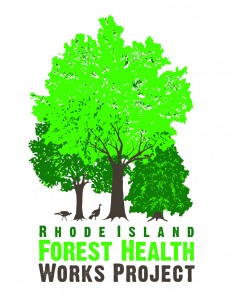Blackstone Park Selected For Forest Health Works Project
 Blackstone Park was chosen in 2010 as one of five community sites state-wide for the Forest Health Works Project project. Sponsored by the Rhode Island Natural History Survey (RINHS) and the Rhode Island Department of Environmental Management (DEM), this reforestation project is funded with federal American Recovery and Reinvestment Act funds.
Blackstone Park was chosen in 2010 as one of five community sites state-wide for the Forest Health Works Project project. Sponsored by the Rhode Island Natural History Survey (RINHS) and the Rhode Island Department of Environmental Management (DEM), this reforestation project is funded with federal American Recovery and Reinvestment Act funds.
The program is aimed at improving forest health by tackling invasive plant species. In our park, contractors certified in invasive vegetation control projects removed Oriental bittersweet and Euonymus alatus from approximately 1.3 acres on the northern side of Angell Street and along the southern end of Parkside Avenue, and replanted the area with native shrubs, trees, and perennials.
Because of the density of the invasive plants, the work to control was done in two stages. In March 2011, the contractor cut down and removed vines and shrubs from the site and painted the stumps with herbicides that are permitted near waterways. (Permits for this work were issued by the Coastal Resources Management Council, or CRMC). And the Parks Department removed Norway maples, another invasive species. In the fall of 2011 contractors repeated the treatment in order to control invasive plant re-growth. For the next five years, as required by the CRMC’s permit, volunteers will monitor and weed the area in order to prevent the return of invasive species.
On April 27, 2012, contractors aided by volunteers planted over 1000 native trees, shrubs, and perennials appropriate for the site conditions. The planting is part of the Rhody Native Initiative, an RINHS program that encourages native plant use. Over 800 perennials were raised by volunteers from seed collected in the park and at sites throughout Rhode Island.
The new plants will will grace the park through the seasons while also providing food and habitat for wildlife. When they grow larger and send out seeds of their own, you will be able to see their offspring scattered throughout the area.
Many of the new plants are suitable for residential gardens, and the Plan’s coordinators hope to inspire local gardeners to include native species in their garden designs. For more information on where to buy and how to grow native plants, see www.rhodynative.com.



